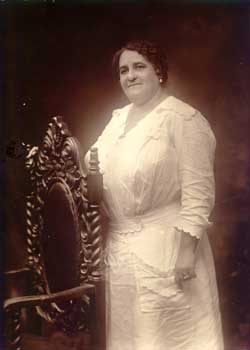Although an important figure in both U.S. and African-American history, Maggie Lena Walker is not a household name—not the way, at least, that her contemporaries such as Brooker T. Washington, Zora Neale Hurston, or W.E.B. Dubois are.
Yet Walker was the first woman (of any race) in the nation to charter a bank, which she did when she opened the St. Luke Penny Savings Bank in Richmond, Va., in 1903. At least among those of us working in community development, that fact alone ought to make her far better known. Just last year, the city of Richmond lifted up her legacy when Mayor Dwight C. Jones chose to name the city’s anti-poverty program the Maggie L. Walker Initiative for Expanding Opportunity and Fighting Poverty.
Richmond’s program, which includes the creation of the nation’s first Office of Community Wealth Building, marks a reimagining of community economic development policy. The use of the phrase “community wealth building” is deliberate.
As Professor Thad Williamson, who has taken leave from the University of Richmond to help launch the initiative, explains: “We’re shifting a little away from the anti-poverty phrase—although it’s still used—simply because we don’t want people to think it’s anti-poor people. The focus is on poverty reduction but also building up neighborhood wealth.”
It is also a departure in that the office has a community advisory board entitled the Community Wealth Advisory Board—half of which is composed of residents below the poverty line—that will review and give feedback regarding proposals coming out of the office. Broadly, the office aims to break down divisions among seven different policy areas—transportation, housing, workforce development, targeted economic development, early childhood education, adolescent transition, and college access—in order to more effectively uproot structural poverty.
The link between community wealth building and Walker is clear.
The Independent Order of St. Luke, to which Walker dedicated much of her professional life, had a clear community development focus, or, in the language of her day, “self-help.” In this spirit, when Walker encountered gaps in the asset-building web of the order, she helped establish new businesses to fill them—the bank being one and the St. Luke Herald newspaper being another.
The City of Richmond’s website contains a breakdown of the $3.4 million initiative budget. Announced in April 2014, the city’s initiative includes $300,000 for the Office of Community Wealth Building, the nation’s first such office. “We have the opportunity here in Richmond to build a national model for building an effective ladder out of poverty for our residents,” the mayor announced when creating the office. Additional budget items within the $3.4-million program include:
- $1 million for capitalization of the Affordable Housing Trust Fund
- $200,000 for public housing service navigators
- $436,000 for workforce development
- $255,000 for wrap-around parenting, childcare, and transportation services for workforce development program participants
- $450,000 for investments in targeted economic development that can provide accessible employment to city residents with a high school degree or less, including $150,000 for social enterprise, patterned on the Evergreen Cooperatives effort in Cleveland
- $350,000 for planning the development of a bus rapid transit line
- $357,500 for education, with the goal of establishing a citywide Promise Scholarship program, based on a model in Kalamazoo, Michigan, that provides financial access to college or appropriate vocational education.
As columnist Michael Paul Williams points out, the new approach aims to “undo centuries of Richmond history, including a poverty infrastructure built by ill-advised or malevolent public policies and sustained by latter-day indifference,” a point also addressed in a recent Washington Post article. Richmond’s policy is new, but deserves our attention.
And the stakes are high. Williams concludes: “We don’t have the luxury to fail.”
(Photo courtesy of the National Park Service.)






Comments